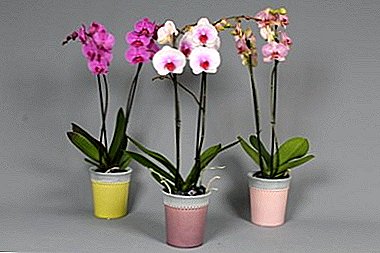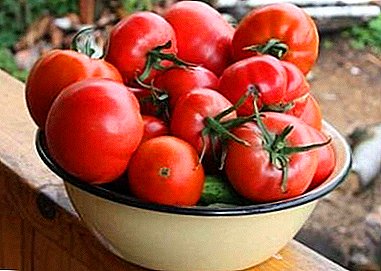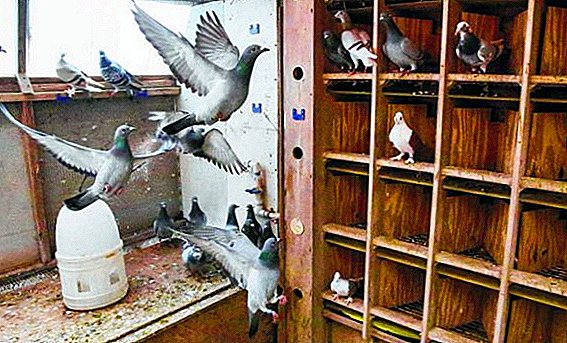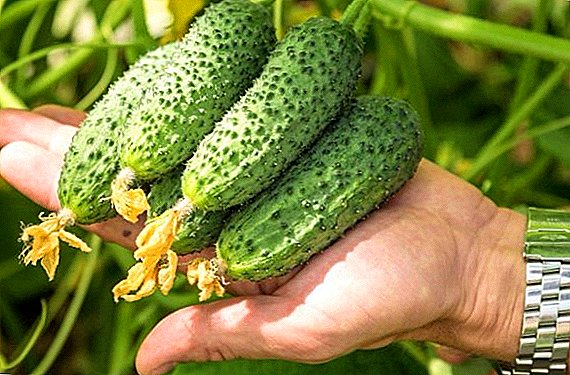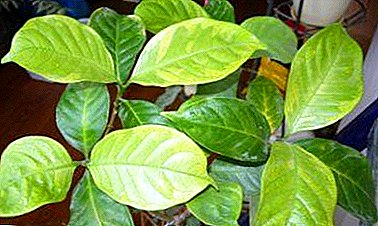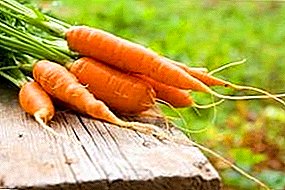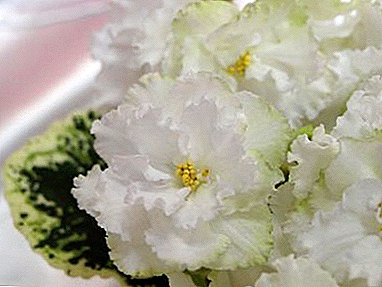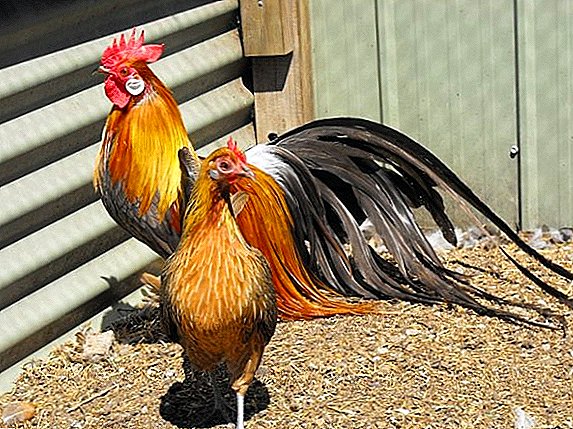 The main requirement for breeds of chickens for keeping in cold climatic conditions is high egg production productivity with minimal care conditions and low temperature. In Russia, the following areas are clearly defined in bird farming:
The main requirement for breeds of chickens for keeping in cold climatic conditions is high egg production productivity with minimal care conditions and low temperature. In Russia, the following areas are clearly defined in bird farming:
- egg;
- meat;
- egg and meat;
- decorative.
Egg breeds
Representatives of the egg direction are distinguished primarily by low body mass, since they have completely different tasks. They grow quickly and go through a puberty phase. The average productivity is from 200 to 300 eggs per year from one head.
Check out the tips for keeping egg breeds of chickens: super nickname, Czech gold, Xin Xin Dian, Italian quail, Laceydansi, Grunleger and Siberian pedigree.
Leggorn
The most popular and productive breed of the egg direction, has a high prevalence rate. The breed appeared from the crossing of Minorca and the White Italian Chicken. Bred in 1859, it was introduced to Europe in the 70s of the last century, from where it came to Russia.  Visually, egg breeds are quite similar to each other, but Leggorn is distinguished by:
Visually, egg breeds are quite similar to each other, but Leggorn is distinguished by:
- wide chest and wedge-like body;
- an unusual comb, more like a leaf, which in cocks clearly stands straight, and in hens it hangs on its side;
- plumage color is the most diverse: from white to quail, but the most common is white;
- plumage color in adult livestock white, in young - yellow;
- head average, red catkins and dark beak;
- the neck is long and not thick;
- the iris of the eye is yellow in the adult individual and orange in the young;
- legs are thin, medium in length;
- tail fluffed up, located at an angle of about 40 ° with respect to the body.
Poultry farmers should find out why chickens are rushing badly, why chickens are falling, balding, pecking eggs and each other until the blood.
The average weight of the hen is 1.5-2 kg, the rooster 2.5-2.8 kg. Puberty is reached at 17-18 weeks. Eggs begin to carry in 4-4.5 months, the highest rates - in the first year of laying. The efficiency of the hen is 300 eggs per year. Laying fertilization reaches 95%. The output of young - 87-92%. The instinct of incubation is completely absent. 
Russian white
The second most common breed of egg direction in the world. The result of crossing Leghorn and local birds. From the Leghorn, they borrowed an atypical comb. The breed is also with a high egg production rate and extremely unpretentious to the conditions of detention.
External breed data:
- they can be visually identified by a long and even line of the back;
- middle neck thickened;
- wide body and large chest, musculature developed;
- strong, medium length legs, not plumed, tail medium. In roosters, an even longer body, a larger head, and a developed keel part of the chest are noted;
- strong beak of yellow color;
- plumage is always white.
 The average body weight of the hen is 1.6-1.8 kg, the rooster is 2-2.5 kg. Already in the first year, the productivity is 200-230 eggs, although the breed is small-haired. Laying start at the age of five months. Fertilization of eggs - 93%, hatching of chickens - 82%. The instinct of incubation is not observed.
The average body weight of the hen is 1.6-1.8 kg, the rooster is 2-2.5 kg. Already in the first year, the productivity is 200-230 eggs, although the breed is small-haired. Laying start at the age of five months. Fertilization of eggs - 93%, hatching of chickens - 82%. The instinct of incubation is not observed.Minorca
The birds were bred in Spain from local breeds on the island of Minorca, hence the name.
Did you know? At an exhibition in Paris, the Minorca breed of chickens was presented under its second name, which took place at the end of the 19th century - Barbezieux.
Features of appearance:
- The typical color of the plumage is black with a green tint, but there is also a breed of the white variety;
- the visual feature is a leafy bright comb hanging to the side;
- small head;
- roosters have 4-6-toothed bright red comb, upright. In females, it hangs loose on one side, but does not close its eyes. Bright red earrings;
- red face and dark beak with yellow tip;
- eyes are dark, brown or black;
- the neck is long, the body is elongated, seen from the side in the form of a trapezoid, the chest is completely rounded;
- strongly developed wings and abdomen;
- long strong legs, claws and tarsus of a dark color;
- in the subspecies with the white color of the plumage, the difference is that there are instances with a pink color of the comb, and it narrows them from front to back;
- color of claws and tarsus is light, with a pinkish tinge.
 They are more mass: females - from 2.7 to 3 kg, roosters - from 3.2 to 4 kg, moreover, according to the derived standards, the average weight of the hen is 2.5 kg, the male - 3 kg. Hatching instinct is absent in both types. The productive period starts at 5 months.
They are more mass: females - from 2.7 to 3 kg, roosters - from 3.2 to 4 kg, moreover, according to the derived standards, the average weight of the hen is 2.5 kg, the male - 3 kg. Hatching instinct is absent in both types. The productive period starts at 5 months.But in itself, the breed is not quite industrial egg direction, their efficiency - 160 eggs per year from one head. Therefore, the view is disappearing. In Spain, a program for the conservation of the breed.
Did you know? This breed was presented to Russia by the Turkish Sultan in 1885.
As for the strong characteristics of the breed:
- high egg production and egg taste;
- beginning of laying at 5 months;
- high fertility and survival of offspring;
- delicious meat;
- lack of aggression in the herd.
 Breed weaknesses:
Breed weaknesses:- lack of maternal instinct;
- fear of dampness and cold.
Meat-egg breeds
Farmers love this type for versatility. Here are embodied and high rates of egg production, and a large body weight, i.e. meat characteristics. Today, the most popular breeds of this direction have taken root in the Urals, let's consider them in more detail.
Consider the peculiarities of the maintenance of such meat-egg breeds of chickens: Ostfrizian gull, Livensky, Zagorskaya salmon, Tetra, curly chickens, Oravka and augsburger.
Amrok
In some sources - Amroks, the breed is bred by German breeders. The predominant type of color - alternating horizontal gray and white stripes. But the clarity of the lines is more diffuse compared to the Plymouthrock breed, on the basis of which this species was derived.  The breed is autosex, that is, in 80% of chickens on the first day, the presence of a light spot on the head determines that it is a female.
The breed is autosex, that is, in 80% of chickens on the first day, the presence of a light spot on the head determines that it is a female.
Amrok's visual characteristics:
- head shape is average;
- a small red fleshy comb falling to the side;
- eyes a little on the roll out, red-brown;
- yellow beak;
- voluminous oblong croup, with a broad base at the tail and with a straight broad back;
- chest deep and wide. Noticable lower legs.
- the color of the rooster is somewhat lighter than that of the chicken. In adults, moderately loose plumage.

Sussex
The most popular English breed, bred in the old English county of Sussex - hence the name. The original color of the eggs, mostly beige, but can come across brown and even green. They are not whimsical, take root in any conditions. Not aggressive in nature and besides beautiful hens.
Externally, the birds look like this:
- the colors are the most diverse, but the most common is Colombian (like a cuckoo);
- head small and wide;
- dark, slightly curved beak, lighter on the tip;
- eyes of red and orange;
- comb and catkins bright red, erect comb, 4-6 teeth;
- neck covered with plumage, small, tapering to head;
- rectangular body, narrowing to the tail.
- the back is a wide, large belly;
- chest powerful, wide;
- the wings, tight to the hull, are set high and rather short;
- tail raised, tail feathers covered with braids;
- the musculature of the tibiae of medium size is very developed, the fingers and tarsus are small and light.
 Impressive in size: hen's weight - from 3.2 kg, rooster - from 4 kg. Masonry starts at 5-6 months. In winter, productivity decreases. The average efficiency of the hen is 160-190 eggs per year, but sometimes it reaches up to 250 pieces from one unit. Egg fertility is high, the survival rate of young stock is up to 98%.
Impressive in size: hen's weight - from 3.2 kg, rooster - from 4 kg. Masonry starts at 5-6 months. In winter, productivity decreases. The average efficiency of the hen is 160-190 eggs per year, but sometimes it reaches up to 250 pieces from one unit. Egg fertility is high, the survival rate of young stock is up to 98%.Orpington
Another representative of the English selection. Officially, the standards recorded 11 types of colors. Orpington has visual features that are common to both genders:
- plumage scanty, tight to the body;
- very large croup, massive and wide, low planted;
- volume, developed chest;
- high body, vertical posture;
- very straight back line;
- pronounced muscular legs;
- neck bent;
- the head resembles the head of a bird of prey, a very gloomy look.
- massive, wide body;
- well feathered, medium neck has a slight slope;
- small rounded head;
- face not fledged;
- crest normal, medium round earrings;
- strong beak
- eye color depends on plumage, varies from orange to black;
- the chest is especially volumetric;
- a strong shoulder girdle, a wide back starts from it, passing into the tail part;
- wide low belly;
- the tail is short with lots of feathers;
- medium small wings;
- hip is feathered; paws are not;
- legs of medium length.
 Layers are distinguished by the fact that their body is more stocky. They can see a clear line neck - back - tail. The tail is short, very wide, densely feathered. The average live weight of the rooster is 5-7 kg, layers - 4.5-5.5 kg. Survival rate of young stock - 93%. Egg production - 140-160 eggs per year.
Layers are distinguished by the fact that their body is more stocky. They can see a clear line neck - back - tail. The tail is short, very wide, densely feathered. The average live weight of the rooster is 5-7 kg, layers - 4.5-5.5 kg. Survival rate of young stock - 93%. Egg production - 140-160 eggs per year.Oryol chickens
The uniqueness of the breed - more than 200 years of history and that it is completely domestic. Moreover, it was used universally: from meat and egg directions to participation in cockfighting and as a decorative breed.
The breed is very comfortable in maintenance: do not experience stress from either the heat or the cold. And visually you can’t confuse them with anyone, besides a very beautiful color, nature gave them a beard and tanks.  Visually, there are small differences in roosters and chickens. At the male:
Visually, there are small differences in roosters and chickens. At the male:
- proud fighting stance and figure (the female has a more squat, horizontal shape);
- the raised torso steadily keeps on very strong high legs;
- the tail is long and well feathered;
- neck long, magnificently feathered, with a warlike bend;
- earrings are poorly developed and almost hidden under the plumage;
- the crest is small, standing, of a crimson color, it is feathered with a feather bristle;
- the skull is flat, broad in the back of the head and with pronounced brow ridges;
- eyes of red and amber color;
- the beak is curved, with a bright tip.
 The average weight of a male is 3.3 kg, the female can gain from 2.5 to 2.8 kg. The average egg production is 150 pieces per year. Since the breed is not suitable for industrial scale and requires increased attention at a young age (chickens are slowly fledging, have a tendency to weak legs, colds), it began to disappear.
The average weight of a male is 3.3 kg, the female can gain from 2.5 to 2.8 kg. The average egg production is 150 pieces per year. Since the breed is not suitable for industrial scale and requires increased attention at a young age (chickens are slowly fledging, have a tendency to weak legs, colds), it began to disappear.Maran
The French breed of chickens, bred in the city of Maran, where the name is taken from. The cold climate of the city allowed to breed a breed that is resistant to the difficult climatic conditions of the Urals and to diseases. Although earlier the breed was not very popular in Russia, now there is a tendency to increase its population.
One of the main decorations of the breed is a beautiful color palette. Quite a large breed, they are called hens that carry golden eggs. Dark brown eggs are considered the most delicious and healthy. Very strong shell, some scientists believe that pathogenic bacteria do not penetrate through it.  Externally Marana look like this:
Externally Marana look like this:
- feathers tight and cover the entire body of the bird;
- small head;
- eye color is orange-red;
- trunk elongated, large;
- the tail is at an angle of 45 °, hanging down;
- the legs have a light shade, the thigh is more feathered outside, all 4 toes on the paws are clearly separated;
- Roosters are visually more feathered, they have pronounced red earrings.
Important! The eggshell is very durable and when breeding offspring it may be that the chicken can not pierce it, so that he does not die - you need to keep track of the timing and, if necessary, help him to be born.
The average weight of the hen reaches 3 kg, the rooster up to 4 kg. Average egg production - 150 pcs. per year for 1 layer. The breed has an instinct of incubation. Character calm. 
Meat breeds
Meat breeds are always distinguished by a large physical weight, this is their industrial value. Although it is the weight that most often becomes the cause of their main drawback - diseases due to the distortion of the limbs. Their egg production usually does not exceed 150 pcs. per year per 1 herd unit.
Check out such meaty chickens as B-66, Brama, Mechelen cuckoo Malin, Brama light, Dorking, La Flush and Langshan.
Cochinquin
Breed bred in Vietnam. Despite the size, very harmoniously folded. A distinctive feature is the plumage on the paws. This makes the already squat hull almost spherical. If the diet of the bird does not cover the need for protein and minerals, the chickens grow slowly and gain weight. Feathers fall out, productivity decreases, skin diseases develop.  Cochinquins have:
Cochinquins have:
- small head;
- eyes are red-orange;
- neck in transition to the shoulders is very much arched in a bend;
- wide developed chest and back;
- beak light;
- single comb, leaf-shaped;
- the constitution of this type of bird is tender, loose;
- their torso and legs are thickly covered with feathers;
- calf developed, proportional;
- tail feathers shortened;
- neck and limbs shortened, but strong;
- the wings are not particularly pronounced and hidden under the plumage in a calm state;
- very diverse color.
Important! Chickens of this breed are unpretentious in care, but it is for them that it is important to ensure that the hen house does not have high humidity - this dramatically and negatively affects the condition of feathers and skin on the paws.
The average weight of a female is up to 4 kg, the male is up to 5 kg. Puberty later and later sit on the egg-laying. At present, Cochinquins are inferior in meat productivity to broilers. They are quite good hens. Character balanced. Egg production - 110 pcs. per year, and in winter it rises. 
Jersey giant
Breed is considered the most gigantic in the world and the most rare. Birds are very strongly developed physically, easily adapting to the most severe conditions. They get along well with other inhabitants of the farm and are very tame, get used to it and react accordingly to their owners. Accepted standards colors only three.
Important! This breed due to its flexible temper and measured rhythm of life is prone to obesity. And this issue needs to be controlled by farmers, since this quickly affects the productivity of the birds.
Although this is a meat breed, it has the best taste in the very first year of its life.
Giants are famous for their standard appearance:
- big big head;
- 6-toothed comb;
- pronounced ear rings red;
- its beak is small and curved;
- neck strong average length, turning into a massive body;
- large body, horizontal setting (there is something in common with broilers);
- strong legs, with developed muscles, pronounced hips, elongated with metatars of red or black color - depends on the color of plumage.
 The average weight of a male is from 4.5 kg to 5.5 kg, females from 3.6 kg to 4.5 kg. Weight gaining up to 5 months. The productivity of the Jersey giant reaches 180 eggs per year per 1 layer. Sexual maturity comes to 7 months. And in 1.5 years, they completely stop the development. Birds of this breed are excellent laying hens.
The average weight of a male is from 4.5 kg to 5.5 kg, females from 3.6 kg to 4.5 kg. Weight gaining up to 5 months. The productivity of the Jersey giant reaches 180 eggs per year per 1 layer. Sexual maturity comes to 7 months. And in 1.5 years, they completely stop the development. Birds of this breed are excellent laying hens.Decorative hens
Ornamental breeds of chickens have more aesthetic value. Usually such breeds originate in the East. Their feathers can be used in headdresses, jewelry and decor. Specifically, in Russia it was bred and for a long time, about three hundred years, the breed of Pavlovsk chickens was actively bred. Then it was declared extinct, but in the 90s of the twentieth century a small flock was found on the lands of the Urals.
Read about the recommendations for the maintenance of the most popular ornamental breeds of chickens: Crested, Brama, Altai bentamka, Yokohama, La Flush, Spaniard and Laceedani.
Chinese silk
Ancient decorative breed that came to us from Asia. The breed has a delicious meat with a high content of amino acids and vitamins. The fluff is regularly cut, which is used as intended.  The head of Chinese silk is decorated:
The head of Chinese silk is decorated:
- tuft (diademka);
- tanks;
- little beard.
Did you know? Chickens of Chinese silk breed have brown-blue skin greyish black meat and black bones. Such unusual colors - the result of the work of natural pigment eumelanina. Restaurants in Europe and around the world cook their meat according to secret recipes and sell the rarest delicacy.
The external signs of a snare are:
- warty comb, medium (such its shape and size are inherent in the form of the crested);
- the head is elegant and small;
- the neck is of medium length;
- elongated beak with a curved tip;
- color black and blue;
- medium-sized body, rounded;
- the back is wide, the breast is developed;
- 5 clearly separated feathered fingers.
 The average weight of the chicken reaches from 0.8 to 1.1 kg. The leader of the pack reaches one and a half kilograms. Sexual maturity comes in 6.5-7 months. Egg production - up to 120 eggs per year.
The average weight of the chicken reaches from 0.8 to 1.1 kg. The leader of the pack reaches one and a half kilograms. Sexual maturity comes in 6.5-7 months. Egg production - up to 120 eggs per year.Important! The chickens of the Jersey giant are best raised in an incubator. Because, because of its weight, the hens are very unhurried and not careful, they not only crush eggs, but also chickens.
Birds have a pronounced maternal instinct and are able to sit not only their offspring, but also the foundlings. The character is very peaceful, almost tame. The colors vary in the range of white, black, yellow and blue, but white is the main one.
It is important that the standards adopt a single color, any blotches are a deviation from the norm. Feathers without hooks, with a soft core, are not attached to each other at all, therefore they resemble more fluff or fur, and the representatives themselves look like animals with soft fur.
Video: Homemade Chinese Silk Chicken
Phoenix
Birds of the European selection, have exclusively decorative mission. They have no industrial interest. When they came to Russia, attempts to breed a rock failed. According to the standard with a small mass of poultry tail length should reach 3 m. In Japan, they are forbidden to kill.
Did you know? Standard in Japan for the Phoenix - tail length of at least 10 meters.
Breed inherent:
- head narrow, small;
- catkins average;
- normal, proportional comb, upright;
- the beak is medium, horny or gray-blue;
- the neck is not high, the mane falling from it runs along the entire back;
- severe high chest;
- body straight, set low, but the silhouette is slim;
- developed shoulder girdle;
- plumage of the loins is elongated, beautiful. In roosters, it may touch the ground.
- tail set low. The tail feathers are lush, flat, elongated due to the steering and integumentary feathers. Standard length - from 3 meters;
- the wings are highly positioned, tight to the body;
- the stomach is not pronounced;
- rich color palette;
- legs are low, feathered;
- tarsus are special, color from gray-blue to dark green;
- in males available elegant thin spurs.
 The live weight of the rooster reaches 2.5 kg, the hens - up to 2 kg. Egg production - up to 100 pieces per year. Survival of young stock - up to 95%. The instinct of hatching in representatives of this breed has been preserved, but the capriciousness in character can endanger the brood, therefore usually their eggs are laid to layers with more stable maternal habits.
The live weight of the rooster reaches 2.5 kg, the hens - up to 2 kg. Egg production - up to 100 pieces per year. Survival of young stock - up to 95%. The instinct of hatching in representatives of this breed has been preserved, but the capriciousness in character can endanger the brood, therefore usually their eggs are laid to layers with more stable maternal habits.Did you know? As a result of incessant breeding work at the University of Nagoya, they managed to get a rooster with a tail length of 11 m.
Content Basics
The content of any breeds of chickens in difficult climatic conditions of the Urals pursues the achievement of two goals:
- Save egg production herds in winter.
- Keep healthy livestock and in full, without loss to meet the spring.

Taking into account the peculiarities of the climate in the Urals, the key aspects are:
- the presence of a warm room for keeping poultry. Local farmers warm the floor with hay, and the walls with sawdust, foam or the same hay;
- heating, it is recommended to use local heating systems in the form of "brand" barrel stoves. Because oil, gas and electric heaters (guns) are quite expensive;
- local farmers practice joint keeping of chickens with goats and turkeys, the goal is the same - keeping the heat indoors;
- extension of daylight for laying hens in order to preserve their productivity. To do this, it is necessary to provide lighting of at least 5 watts per 1 square meter. m. The average recommended time to maintain continuous illumination of the room is 14-16 hours.

Feeding rules
Proper nutrition of chickens - the basis of stable year-round egg production. Chickens will be stably run if you adhere to the following rules:
- feeding more than three times a day;
- crushed grain, for easier digestibility in conditions of limited mobility;
- obligatory presence of mixed fodder and cereal mixers;
- do not exclude from the diet chalk, gravel, small pebbles;
- we replace greens from a diet with zucchini, pumpkin;
- include fish oil, bone meal;
- the presence of warm water around the clock.
We advise you to find out how to make a diet for chickens, what types of feed for chickens are and how to prepare a mash for laying hens.
Nature is not limited in its decisions and suggestions. And even the most demanding and incredible breeds of animals with a caring approach may well live in difficult climatic conditions. In our case with chickens of different breeds, it is important to preserve their characteristic indicators of egg production and total body weight in meat breeds.


